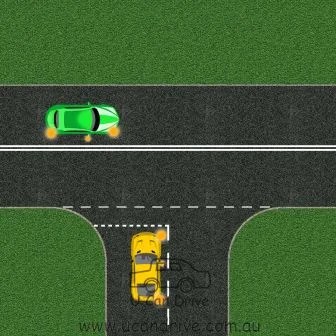FAQs
A single solid yellow line means that passing is not advised but you may pass, with extreme caution. A single dashed yellow line means passing is allowed. A double solid yellow line means passing is not allowed under any circ*mstances.
What is the difference between 1 and 2 solid lines? ›
Sometimes a continuous line is accompanied by a second solid line, bringing a double whammy of consequences should you ever cross it. Put simply: a motorist should never cross double continuous lines unless manoeuvring around an obstruction or cyclist, and only if it can be done safely.
What is the difference between single and double lines? ›
A double white line indicates that lane changes are prohibited. A single white line indicates that lane changes are discouraged. A dashed white line indicates that lane changes are allowed. Symbols are used to indicate permitted lane usages.
What is the difference between double and single yellow lines? ›
Double lines mark lengths of road where there is no waiting at any time. There is no longer any need for signs to be placed explaining this. Single lines indicate a shorter period when waiting is not permitted, such as Monday to Saturday 8am to 6pm.
What is the solid line rule? ›
You are not permitted to overtake another vehicle where you must cross a Single Solid White Line to do so unless: You need to cross the line to avoid a hazard or obstruction. You are obeying a traffic control device.
What does a single solid line represent? ›
A single solid white line marks traffic lanes going in the same direction.
What is the difference between single lane and double lane? ›
Single-lane roads have only one lane of traffic in each direction, while dual-lane roads have two lanes of traffic in each direction. Multi-lane roads can have three or more lanes of traffic in each direction, with some highways having as many as ten or more lanes.
What do the single and double lines represent? ›
A single line indicates a bond between two atoms (i.e., involving one electron pair), double lines (=) indicate a double bond between two atoms (i.e., involving two electron pairs), and triple lines (≡) represent a triple bond, as found, for example, in carbon monoxide (C≡O).
What is the difference between single line drawing and double line drawing? ›
In electrical diagrams, a single line is often used to represent a single-phase circuit, while a double line is used to represent a three-phase circuit.
What is a single line? ›
A single-line diagram (also known as an SLD or one-line diagram) is a simplified representation of an electrical system. Symbols and lines are used to represent the nodes and connections in the system, and electrical characteristics may be included as well.
Double yellow lines usually separate opposing lanes of traffic, creating a no-passing zone in both directions. Double white lines usually separate lanes of traffic heading on the same direction. The intent is to prohibit changing lanes in areas of hazard to reduce the potential conflicts.
What does a double solid yellow line mean? ›
A double solid yellow line indicates that there is absolutely no passing or crossing the double solid yellow line at any time. Shifting into another lane or attempting to pass another vehicle is not allowed when a double solid yellow line is present.
Can you load and unload on a single yellow line? ›
Loading or unloading on yellow lines
Loading or unloading can take place on single or double yellow lines without kerb markings, for an unlimited time before 11am and after the end of controlled hours, or 6.30pm (whichever is earlier).
What are 2 different straight lines? ›
What is the Difference Between Parallel and Perpendicular Straight Lines? The angle between two parallel lines is 0 degrees, and the angle between two perpendicular lines is 90∘. Parallel lines are aligned in the direction of each other, whereas perpendicular lines are aligned at a 90∘ angle with each other.
Can you cross on a single solid line? ›
Solid White Line
You should not cross this line to change lanes unless necessary and safe to do so. In some states, it is illegal to cross a solid white line; in California, it is legal to do so. Only cross a solid white line if it is safe to do so; solid white lines are meant to discourage you from changing lanes.
What is a solid line? ›
"Solid line" means a line with no breaks.
What are solid white lines used to 1 point? ›
Solid white lines divide lanes of traffic traveling in the same direction. Solid white lines are also used to mark the right edge of the road. As a general rule, broken traffic lines can be crossed and solid lines cannot, except when making a turn.
 Turning Right
Turning Right
 Turning Right
Turning Right